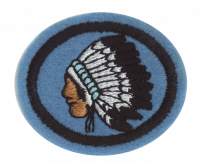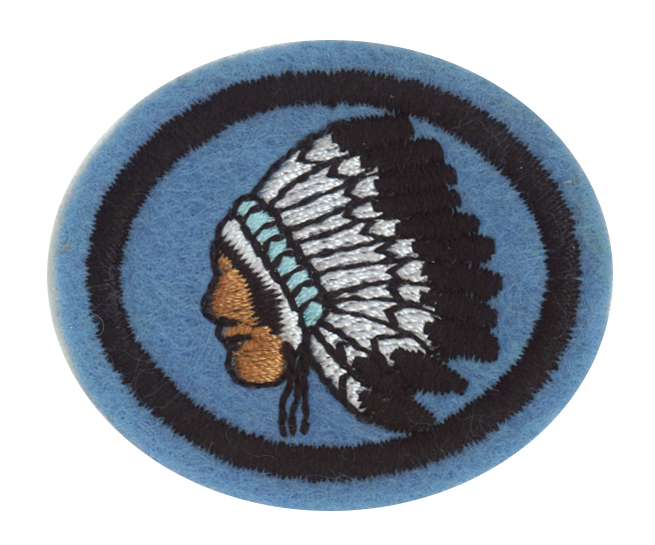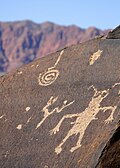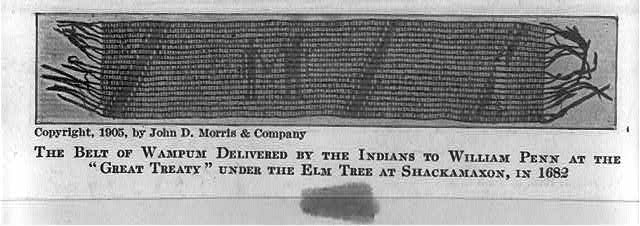Difference between revisions of "AY Honors/Native American Lore/Answer Key/es"
(Created page with "<noinclude>") |
(Created page with "</noinclude> <!-- 6. Nombrar cinco rocas y/o minerales y los usos que hacen de los mismos las indígenas norteamericanas. -->") |
||
| Line 27: | Line 27: | ||
<!-- 4. Conocer 15 alimentos vegetales que fueron presentados por las indígenas norteamericanas. --> | <!-- 4. Conocer 15 alimentos vegetales que fueron presentados por las indígenas norteamericanas. --> | ||
| − | + | {{clear}} | |
| − | |||
| − | |||
| − | + | {{:Adventist Youth Honors Answer Book/Arts and Crafts/Indian Lore/Foods/es}} | |
| − | {{:Adventist Youth Honors Answer Book/Arts and Crafts/Indian Lore/Foods}} | ||
| − | |||
| − | + | <noinclude></noinclude> | |
| − | <noinclude | ||
| − | |||
{{CloseReq}} <!-- 4 --> | {{CloseReq}} <!-- 4 --> | ||
{{ansreq|page={{#titleparts:{{PAGENAME}}|2|1}}|num=5}} | {{ansreq|page={{#titleparts:{{PAGENAME}}|2|1}}|num=5}} | ||
| − | <noinclude> | + | <noinclude></noinclude> |
| − | </noinclude> | + | <!-- 5. Describir el acecho y rastreo indígena norteamericana. --> |
| − | <!-- 5. | + | {{:Adventist Youth Honors Answer Book/Stalking and tracking/es}} |
| − | {{:Adventist Youth Honors Answer Book/Stalking and tracking}} | ||
| − | |||
| − | + | <noinclude></noinclude> | |
| − | <noinclude | ||
| − | |||
{{CloseReq}} <!-- 5 --> | {{CloseReq}} <!-- 5 --> | ||
{{ansreq|page={{#titleparts:{{PAGENAME}}|2|1}}|num=6}} | {{ansreq|page={{#titleparts:{{PAGENAME}}|2|1}}|num=6}} | ||
| − | <noinclude> | + | <noinclude></noinclude> |
| − | </noinclude> | + | <!-- 6. Nombrar cinco rocas y/o minerales y los usos que hacen de los mismos las indígenas norteamericanas. --> |
| − | <!-- 6. | ||
| − | |||
| − | |||
| − | |||
| − | |||
| − | |||
| − | |||
| − | |||
| − | |||
| − | |||
| − | |||
| − | |||
| − | |||
| − | |||
| − | |||
| − | |||
| − | + | <noinclude></noinclude> | |
| − | <noinclude | ||
| − | |||
{{CloseReq}} <!-- 6 --> | {{CloseReq}} <!-- 6 --> | ||
{{ansreq|page={{#titleparts:{{PAGENAME}}|2|1}}|num=7}} | {{ansreq|page={{#titleparts:{{PAGENAME}}|2|1}}|num=7}} | ||
| − | <noinclude> | + | <noinclude></noinclude> |
| − | </noinclude> | + | <!-- 7. Explicar una forma de cómo las flechas fueron hechas por las indígenas norteamericanas. --> |
| − | <!-- 7. | ||
| − | |||
| − | |||
| − | + | {{clear}} | |
| − | |||
| − | |||
| − | |||
| − | + | {{clear}} | |
| − | |||
| − | |||
| − | + | {{clear}} | |
| − | |||
| − | |||
| − | |||
| − | |||
| − | + | {{clear}} | |
| − | |||
| − | |||
| − | |||
| − | |||
| − | + | {{clear}} | |
| − | |||
| − | |||
| − | |||
| − | |||
| − | |||
| − | + | <noinclude></noinclude> | |
| − | <noinclude | ||
| − | |||
{{CloseReq}} <!-- 7 --> | {{CloseReq}} <!-- 7 --> | ||
{{ansreq|page={{#titleparts:{{PAGENAME}}|2|1}}|num=8}} | {{ansreq|page={{#titleparts:{{PAGENAME}}|2|1}}|num=8}} | ||
Revision as of 16:04, 2 May 2021
Nivel de destreza
1
Año
1944
Version
05.12.2025
Autoridad de aprobación
Asociación General
1
2
3
4
5
6
7
8
A pictograph is an image drawn or painted on a rock face. A petroglyph is an image carved into a rock face. The word comes from the Greek words petro-, meaning "stone" (think of Peter which means rock Matthew 16:18) and glyphein meaning "to carve", and was originally coined in French as pétroglyphe. Petroglyphs are found world-wide, and are often (but not always) associated with prehistoric peoples.
Sites in North America where petroglyphs can be found include:
- Arches National Park, Utah
- Capitol Reef National Park, Utah
- Death Valley National Park, California
- Dinosaur National Monument, Colorado and Utah
- Columbia Hills State Park, Washington
- The Cove Palisades State Park, Oregon
- Jeffers Petroglyphs, Minnesota
- Kanopolis State Park, Kansas
- Kejimkujik National Park, Nova Scotia
- Lava Beds National Monument, Tule Lake, California
- Leo Petroglyph, Leo, Ohio[1]
- Newspaper Rock State Historic Monument, Utah
- Mina, Nuevo León, Mexico
- Olympic National Park, Washington
- Petit Jean State Park, Arkansas
- Petrified Forest National Park
- Petroglyph National Monument
- Petroglyphs Provincial Park, north of Peterborough, Ontario
- Petroglyph Provincial Park, Nanaimo, British Columbia, Canada [2]
- Sedona, Arizona
- Sloan Canyon National Conservation Area, Nevada
- South Mountain Park, Arizona
- St John, USVI
- Three Rivers Petroglyphs, New Mexico [3]
- West Virginia glyphs
- Writing Rock State Historical Site, North Dakota
- Writing-on-Stone Provincial Park, East of Milk River, Alberta
- White Tank Mountain Regional Park, Waddell, Arizona
- Pete's creek Belfast Lassen county California BLM (Shamans cave with solar calender)
- Anza-Borrego State Park California Way off Highway 52 (mortar holes too)
- Shuswap Lake Provincial Parks, BC
9
Wampum is a string of white shell beads fashioned from the North Atlantic channeled whelk shell, and was used by Native Americans who regarded it as a sacred or trade representative of the value of the artist's work. Wampum was also used for engagement, marriage, and betrothal agreements, as well as for ceremony and condolence ceremonies.
Shells were also used for jewellery, as weapons, and for decoration of tipis, clothing and objects such as bags, backrests and ownership sticks.
10
- Leather
- Fur
- Feathers
- Hair
- Antler
- Bone
- Shell
- Wood
- Bark
- Yucca
- Gourd
- Rush
- Stone/Vermillion
- Clay
- Copper
- Gold
- Silver
- Torquoise
- Sinew
- Hooves
- Stomach
- Bladder
- Prickley Pear Cactus
- Red & Yellow Cedar
- Brains,ash,urine
- Corn husks
- Tendons
- Soap plant
- Moss
- Pipestone
- Raw hide
- Flint
- Obsidian
- Turtle shell
- Grass
- Cattail leaves
- Pitch (glue)
- Char coal
11
Stay away from projects like the very popular "dreamcatchers" as the purpose of these is to act as a protective charm to ward off evil spirits. This is contrary to Adventist teachings, and so should not be taught by an Adventist church organization, even if it is explained to the children. Do not set them down this path.
Native Americans were masters of many crafts which Pathfinders might enjoy learning. One possibility for meeting this requirement is to make a pair of moccasins.
Be sure to look into the Leather Craft and Pioneering honors if you choose to make moccasins, as making moccasins meet a requirement in each of these.
If moccasins do not appeal to you, you could try your hand at beadwork:
You can also decorate your moccasins with beadwork.
Or perhaps you would enjoy pottery (see the Pottery honor for details) or some other craft.
Another possible project is to make a bowl from birch bark (if it grows in your area).
Historical Note
This honor used to be called Indian Lore but the name has been updated.











